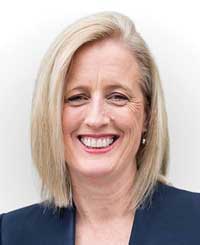
Fifty years ago, Elizabeth Reid, Australia's first advisor on women's affairs, embarked on a countrywide listening tour to hear from women directly about the issues that affected their ability to live freely.
It was a time when women weren't able to secure a bank loan or a mortgage without a male guarantor. The minimum wage for women was pegged at 85 cents in the dollar to men's wages. Single women weren't eligible for government homeowner grants. And married women who went overseas with their husbands weren't even able to fill out their own quarantine forms when they came back into the country.
We've come a long way since then, with successive governments continuing to deliver changes that have made women's lives safer, fairer and more equal – key reforms like the Sex Discrimination Act 1984, the Parenting Payment (Single), Commonwealth Paid Parental Leave Scheme, the Family Law Court and no-fault divorce.
In 2010 we had our first woman prime minister and, in 2022, our first majority-women government.
Working for Women, our gender equality strategy, would not and could not exist without these hard-fought wins over the past decades. But although progress has been undeniable, from where we stand in 2024, we still have a way to go before we can say that things are actually working for women in this country.
Like Elizabeth Reid did half a century ago, I've spent the last 18 months listening to women across Australia, hearing what isn't working for them and asking them what we, as a Government, can do better.
I know there is no 'average' or 'typical' Australian woman. Each of us has different responsibilities, comes from different backgrounds and has unique dreams and aspirations. Still, across the board, the same themes kept coming up – themes that aren't new, but which reflect the enduring challenges that persist for so many women.
That women just want to be safe – at home, at work, in the street.
That women don't want to be crushed under the weight of juggling caring responsibilities and work, navigating complex systems and picking up the lion's share of the load at home.
Women want equal pay. And they want to retire with enough superannuation in their bank accounts to provide some economic independence.
And they want government systems to work for and with them – not against them.
Women want to see violence against women eliminated.
And they – we – don't want to wait for another generation to see all of that happen.
Since coming to Government, we have laid foundations that have started to address these concerns. We have already made significant investments in areas to improve the lives of women by delivering more tax relief to women and making it easier to work more, making child care cheaper, expanding the Government's Paid Parental Leave Scheme, investing in women's safety and improving pay and conditions in the care economy.
But without a clear vision and concentrated effort, the path to equality may still be another 50 years away.
As a Government, we understand that Australian women cannot wait that long – nor should they be expected to.
That's why this Strategy sets out a path to get us there over the next 10 years, with a focus on driving action in 5 priority areas: ending gender-based violence, unpaid and paid care, economic equality and security, health, and leadership, representation and decision-making. It identifies the work underway to deliver on these priorities, as well as areas where the Government intends to focus its attention and future reforms.
Importantly, it sets out indicators of change and measures that will be used to track the success of this Strategy over time. Because standing still is not an option.
My heartfelt thanks go to every person who contributed to the development of this Strategy – particularly the women who have so generously shared their thoughts and time during public consultation. Their input reflects the richness and diversity of perspectives that make up the fabric of our country and that will shape the trajectory of women's equality in Australia over the next decade.
Through this Strategy, our Government is making clear that we understand the challenges facing women across this country, and we know the priority areas for change. These priorities have, and will continue to, inform the work we do.
This isn't a Strategy that outlines every single policy solution – but it does set out a clear commitment from the Albanese Government to work for women. It pays homage to the women who have paved the way before it, and it looks toward a future where we can, and will, fulfil Australia's potential to lead the world on gender equality.

Senator the Hon Katy Gallagher
Minister for Finance, Minister for Women and Minister for the Public Service